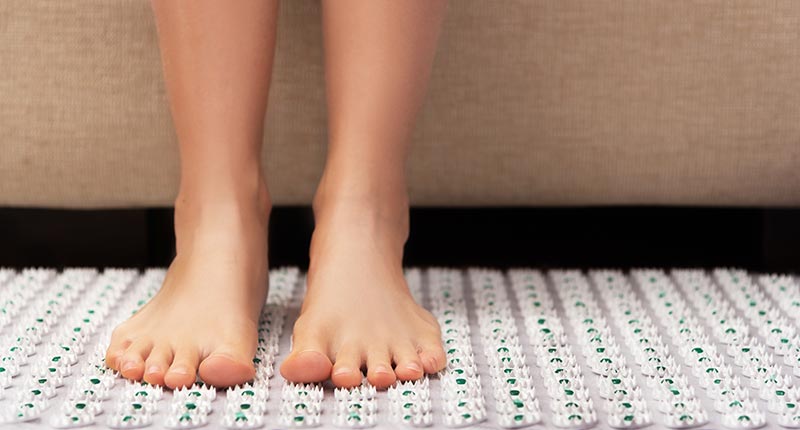In simple terms, tendonitis is inflammation of the tendons—the connective tissues between the muscles and the bones. The condition can cause joint pain and tenderness, stiffness, and impaired mobility around the joint. Tendonitis can affect any of the tendons, including those in the shoulders, elbows, wrists, knees, and hands. In fact, many common injuries often associated with particular sports, such as tennis elbow, swimmer’s shoulder, or jumper’s knee, are actually forms of tendonitis.
With proper rest and physical therapy, most cases of tendonitis will recover within a week or two. Both acupressure and acupuncture have strong analgesic effects, and using acupuncture for tendonitis is an excellent way to relieve pain as you rest the injury.
Can Acupuncture Help Tendonitis?
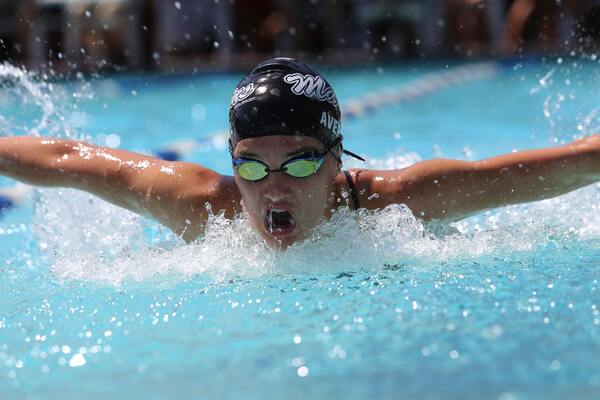
The usefulness of acupuncture treatments for pain relief is well-established. A systematic review of thirteen randomized controlled trials examining the immediate analgesic effects of acupuncture found that acupuncture provided greater pain relief than either analgesic injection with nonsteroidal anti-inflammatory drugs or local anesthetic. Acupuncture for tendonitis has the potential to provide effective relief from chronic pain.
It’s important to remember, however, that the absence of pain is not the same as the absence of injury. More research is still required to determine whether acupuncture for tendonitis is able to provide a complete cure, but many studies appear to indicate its promise. A 2017 pilot study into the efficacy of electroacupuncture for the treatment of calcific tendonitis concluded that electroacupuncture not only relieved calcific tendonitis pain and improved quality of life in affected patients but also contributed to the total regression of calcific depositions. The tendonitis acupuncture points stimulated in the study included GB-34 and SI-9.
In Traditional Chinese Medicine (TCM), tendonitis and other muscular conditions are related to deficiencies in the liver. Acupuncture treatments may strengthen the muscles and repair damage to the tendons. Stimulation of the acupuncture points for tendonitis promotes an anti-inflammatory response, easing the burden on the tendons and increasing flexibility in the joints. If the inflamed area still feels hot, you should first use ice or cold water to cool it down and reduce swelling. Once the sensation of heat begins to fade, acupuncture for tendonitis can prove a highly effective treatment for alleviating the worst pain associated with conditions such as Achilles tendonitis, tennis elbow, swimmer’s shoulder, and patellar tendonitis.
Is Deep Heat Good For Tendonitis?
Deep heat treatments deliver heat deep into the tissues and muscles. This can be done using a machine that produces high-frequency electric currents, producing heat in the body as the energy flows deep into the body tissues. Treatments usually last between five and fifteen minutes.
Deep heat is an effective treatment for injury and pain relief. Heat relaxes the muscles and promotes dilation of blood vessels, improving the flow of blood to the affected area. The machine allows a specific area to be targeted, and muscle tissue, ligaments, and tendons respond especially well. Many patients suffering from arthritis or tendonitis report improvements after deep heat treatments.
A 2022 pilot study demonstrated significant effects on the morphological and elastic properties of the non-insertional region of the Achilles tendon after diathermy treatments, suggesting that diathermy—the use of high-frequency electric currents to produce heat in the body—may be a useful modality for treating Achilles tendinopathy. Like other deep heat treatment methods, diathermy stimulates the circulation, destroys unhealthy tissues, and provides strong pain relief.
An earlier study from 2001 compared the use of deep heat ultrasound treatment to active exercise on the extensibility of the plantar flexor muscles. Stiffness in the plantar-flexor muscles is often associated with tendonitis conditions such as Achilles tendonitis, plantar fasciitis, and peroneal tendonitis. Although all experimental groups in the study showed increases in extensibility, the group receiving ultrasound prior to stretching showed the greatest increase in ankle dorsiflexion over a six-week period.
What Are The Acupuncture Points For Tendonitis?
Acupoint: Bl-58 (Other Names: Bladder-58/Fei Yang/Taking Flight)
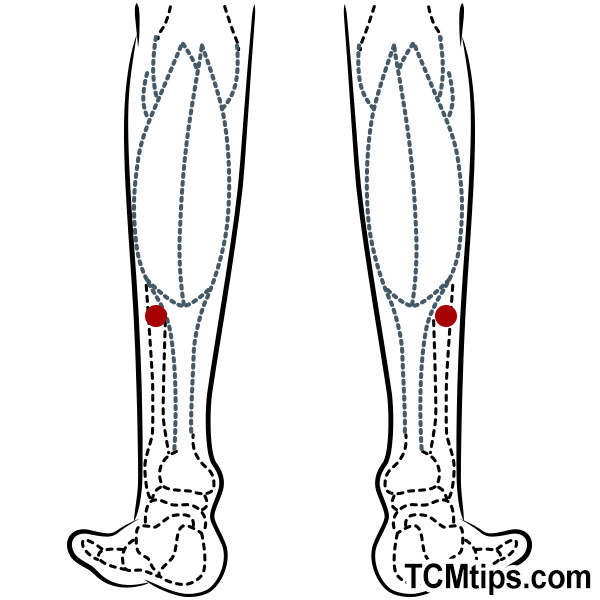
Activating the Fei Yang acupoint expels dampness from the body and alleviates pain in the lower limbs. Stimulate Bl-58 to ease tension in the soleus and gastrocnemius muscles and relieve pain in the lumbar and sciatic nerves. As well as being effective in treating rheumatoid arthritis and cystitis, Bl-58 is often employed in acupuncture for Achilles tendonitis.
The Fei Yang acupoint is found between the lateral gastrocnemius muscles and the soleus muscle on the back of the leg. Massage this point to relieve tension in the muscles, especially after walking or running.
Acupoint: LU-6 (Other Names: Lung-6/Kong Zui/Maximum Opening)

Known as Kong Zui (“Maximum Opening”) in Chinese, the LU-6 acupoint is located on the radial palmar aspect of the forearm, 7 cun above the wrist crease. Activating LU-6 helps to improve circulation, clear heat from the body, and relieve stress. As a lung meridian point, Kong Zui is also helpful in treating cough and sore throat symptoms.

The effectiveness of acupuncture in reducing swelling and chronic shoulder pain has been shown in a clinical trial. Patients suffering from rotator cuff tendonitis reported significantly less pain after four weeks of acupuncture treatment compared to those treated with a newly designed placebo needle. When using acupuncture for shoulder tendonitis, LU-6 is often selected for needling.
If you want to practice acupressure for tendonitis in the shoulders at home, apply firm pressure with your thumb at LU-6, while grasping the back of the forearm. Press and hold for a minute or two while breathing deeply.
Acupoint: LI-7 (Other Names: Large Intestine-7/Wen Liu/Warm Flow)
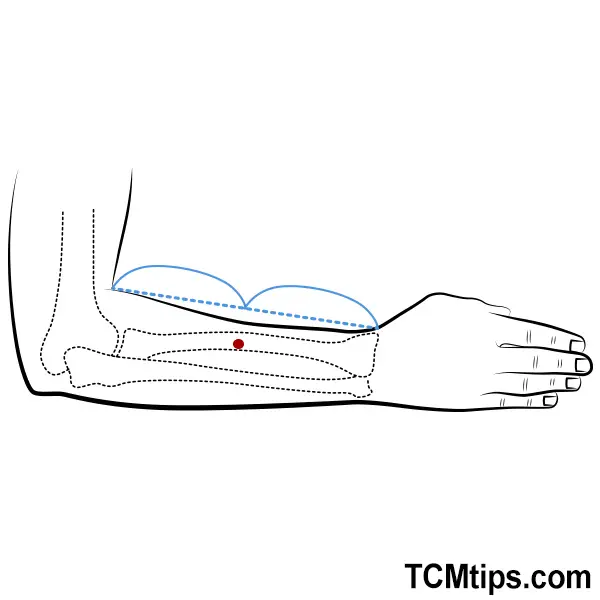
The Wen Liu acupoint on the large intestine meridian is one of the primary points used in acupuncture for wrist tendonitis. It’s also used in the treatment of abdominal pain, backache, and facial paralysis or swelling.
With the elbow flexed, you can find LI-7 on the radial side of the forearm, five cun above the wrist crease. Stimulate this acupressure point to reduce pain in the arms and the shoulders and relieve tension in the muscles.
Acupoint: SI-9 (Other Names: Small Intestine-9/Jian Zhen/True Shoulder)

Known as the Jian Zhen (“True Shoulder”) in Chinese, SI-9 is a versatile acupuncture point effective in treating shoulder and upper arm pain, motor control issues in the arm and the hand, and ulnar nerve pain. SI-9 is also one of the primary acupoints for acupuncture for bicep tendonitis.
If suffering from bicep tendonitis, it’s best not to stretch too much early on. Instead, you can try applying gentle pressure at the SI-9 acupoint with your index finger. You can find SI-9 on the upper back, one thumb-width above the crease below the shoulder joint when your arm is relaxed at your side. If you can’t reach the spot comfortably on your own, ask your partner or physician to help you.
Acupoint: Bl-59 (Other Names: Urinary Bladder-59/Fu Yang/Tarsus Yang)
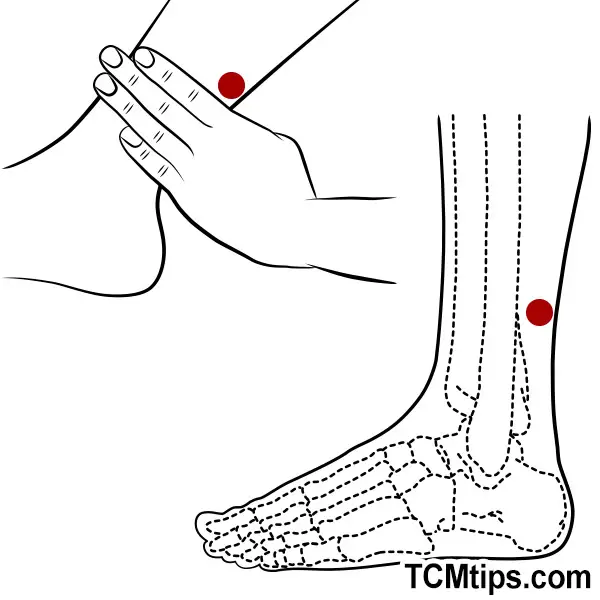
One of the best acupuncture points for tendonitis in the foot is Bl-59, known as the Fu Yang in Chinese. The Fu Yang is located on the lower leg, around three cun above the outer ankle, behind the external malleolus. Massage here stimulates the flow of energy and blood through the body and helps to dispel swelling in the lower limbs and ankle.
Inflammation of the tendons that run along the outer ankle bone and the side of the foot, known as peroneal tendonitis, is a common sports injury. You can use acupuncture for peroneal tendonitis to increase the blood supply to the foot, reduce inflammation, and promote healing of the tissues.
Acupoint: Bl-39 (Other Names: Urinary Bladder-39/Wei Yang/Outside the Crook)
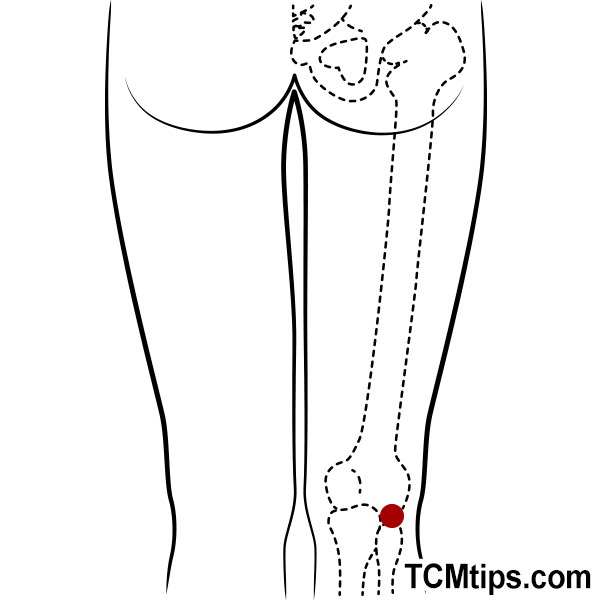
Patellar tendonitis, commonly known as jumper’s knee, is a condition characterized by inflammation of the tendon that connects your kneecap to your shin bone. This is a common injury in athletes training for longer runs or in hikers who have not engaged in proper stretching and conditioning.
Bl-39 is a useful acupoint for treating tendonitis in the knee. Known as the Wei Yang in Chinese, it’s located on the back of the knee, on the medial side of the biceps femoris tendon.
Acupuncture for patellar tendonitis treatment has shown promise in research studies. Acupuncture treatments combined with moxibustion do not cause gastrointestinal distress, an unfortunate side effect of the medications commonly used to treat patellar tendonitis. Although nonsteroidal anti-inflammatory medication may provide more instant pain relief, in a comparative study acupuncture produced significantly more positive long-term outcomes for patients with patellar tendonitis. The researchers concluded that acupuncture is not only helpful in reducing pain but also enhances the body’s own healing ability.
Acupoint: SI-8 (Other Names: Small Intestine-8/Xiao Hai/Small Sea)

One of the most well-known forms of tendonitis is tennis elbow, a form of elbow tendonitis, which affects up to three percent of the population each year. One of the primary acupoints used in acupuncture for elbow tendonitis is SI-8, known as the Xiao Hai.
Activating the Xiao Hai acupoint provides relief from pain and inflammation and improves flexibility in the elbow joint. Located on the medial aspect of the elbow, between the upper end of the ulnar and the medial epicondyle of the humerus, this acupoint on the small intestine meridian is especially effective in treating golf elbow, another common form of elbow tendonitis.
Pressing too hard at this point can cause pain or numbness. If you want to practice acupressure for tendonitis, press gently on the Xiao Hai with the elbow flexed.
Acupoint: TE-4 (Other Names: Triple Energizer-4/Yang Chi/Yang Pool)
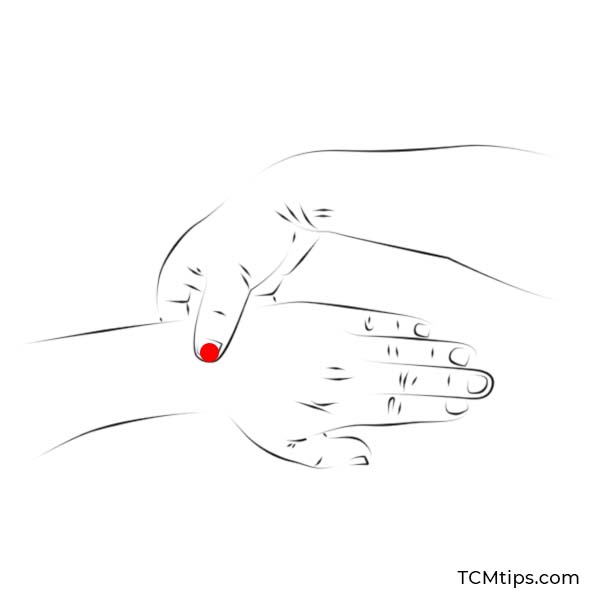
With the increasing use of smartphones and computers in modern society, tendonitis in the hands is becoming more common. Repetitive hand movements cause friction between the finger tendons, leading to inflammation in the tendons of the fingers and hands.
Stimulation of the TE-4 acupoint promotes blood flow through the body and provides relief from stiffness in the joints, making it a useful acupoint when applying acupuncture for tendonitis in the hand. You can find it on the back of the forearm, where the bones of the middle and ring fingers end.
Acupoint: GB-34 (Other Names: Gallbladder-34/Yang Ling Quan/Yang Mound Spring)

The GB-34 acupoint is located on the lower leg, in the small depression anterior and inferior to the head of the fibula. Stimulation here alleviates pain and swelling in the knee, but also has a beneficial effect on the back and the hips, making it a useful acupoint in acupuncture for hip tendonitis or hip pain.
According to Traditional Chinese Medicine (TCM), activating the Yang Ling Quan moves liver Qi, and benefits the sinews and joints.
Acupoint: LI-10 (Other Names: Large Intestine-10/Shou San Li/Arm Three Miles)
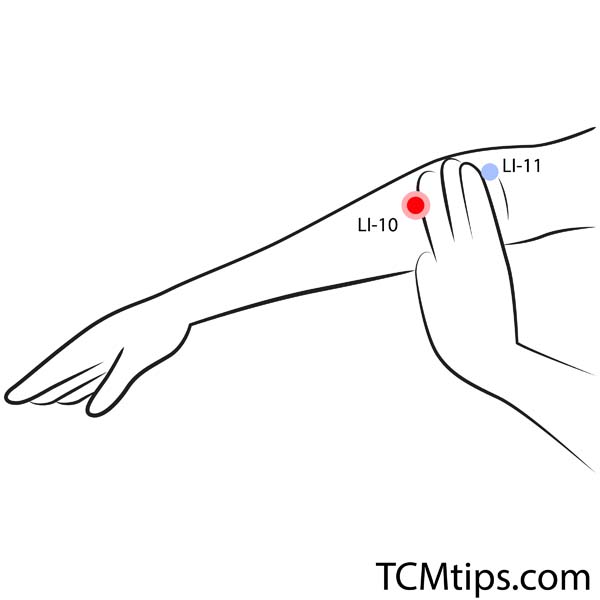
One of the best acupressure points for tendonitis in the arm is the Shou San Li, located on the liver meridian. The Shou San Li is located on the lower arm, three finger-widths from the crease of the elbow when you bend your arm.
Massaging this acupoint provides relief from arm fatigue and stimulates the autonomic nerves, providing relief from numbness and paralysis in the arm or shoulder.
 P. Sze
P. Sze 




